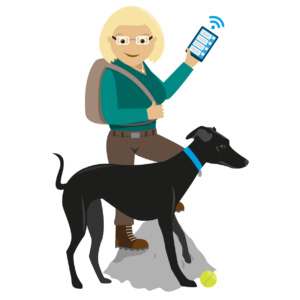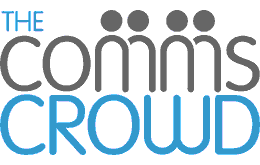Should PRs be doing more to promote the benefits of earned media?
Time to read: 3 minutes
Tech PR lead Debbie Smith looks to balance the more subtle benefits of earned media against the instant gratification of the click through…
So you’ve just achieved two great pieces of coverage for your client. You send them the links and pat yourself on the back. Then you get a reply from their SEO expert: “But one piece doesn’t link to the website at all, and the other only has a link at the bottom.”
They go on to explain that for SEO purposes it’s good to get links, but ideally these links would be towards the top of articles to increase click-throughs.
Resisting the temptation to throw your coffee at your screen in exasperation, you take a deep breath and explain PR 101: the difference between earned, owned and paid media.
This is not the only time I’ve had to explain earned media in recent weeks. So I’ve been thinking about why the question is being asked. Although it may seem glaringly obvious to those of us who’ve spent our careers in B2B PR, perhaps the convergence of different channels has muddied the waters for some marketeers?
It’s not that PRs don’t understand the value of SEO and the value of obtaining links back to the client’s site, it’s simply that earned media is first and foremost the tool to build credibility, increase brand trust and manage reputation.
First, let’s clarify what we’re talking about.
- Paid media: you pay for visibility or reach through advertising, advertorial, PPC or affiliate marketing. So you have complete control, but it’s the least credible. Ultimately you are paying to get your audience’s attention.
- Owned media: includes your website, your blogs, your newsletters and your social media channels, where you control both channel and content. This is ideal for education and demonstrating thought leadership. So no money is changing hands but it’s still you explaining to the world why you are so great.
- Earned media: third party objective endorsement, i.e. someone else is talking about you as an expert, and no money has changed hands. This includes media coverage obtained through PR, where a journalist has covered the story because in their view it’s newsworthy, not because you’ve paid for the coverage. To obtain this you need strong content, whether it’s a product that’s truly innovative, an opinion which provides new and informed views or a piece of thought leadership – which is where owned thought leadership content is valuable, as it can be repurposed for PR.
The great benefit of earned media is the credibility it brings which the other two routes can’t provide.
However, the downside of this is that you don’t get to dictate to the journalists where to put a link back to your client’s site, or indeed if one is there at all, depending on their editorial policy. You certainly don’t go back to a publication and ask for a link to be added or you’ll be promptly referred – with a few choice words – to their advertising department, and they’ll be unlikely to feel inclined to write about your clients again.
Where it gets blurry is when earned media becomes ‘online word of mouth’, including shares and reposts, content picked up by third party sites and media developed through partners and influencers.
Say you post on your company’s LinkedIn page about your new blog (owned) or latest piece of press coverage (earned) – when these are shared, they are both ‘online conversations’, even though the content has originated in different ways. Are posts from partners truly earned, or based on a mutually beneficial relationship i.e. owned? And while tech and fintech analysts (i.e. influencers) review products and provide editorial independence, the ASA has taken many so-called consumer influencers to task for not making clear when content has been paid for.
There’s a tendency to class all click-throughs as equal. Perhaps that’s true for buying trainers. It also makes reporting more straightforward! But in the world of B2B, the clicks driven by third party objective endorsements are surely the most likely to generate real interest and preference.
The journalists we work with pride themselves on their editorial integrity. A discussion on a journalist and PR social media group this week made that abundantly clear. So they’ll only cover material that in their view has earned its place on their websites. And we’ll continue to focus on obtaining that earned media, and other third party objective endorsement, as well as on generating the strong owned content that drives it. We’ll celebrate when journalists write about our clients because we know there is more to building credibility, increasing brand trust and managing reputation than including a back link.
Where we sit in the digital marketing mix

Writing the American Marketing and PR Playbook: Part II

Time to read: 3 minutes
Jo Detavernier, vice president of Swyft our US partner and the founding firm of our global network, First PR Alliance provides this helpful two part guide for UK tech companies on how not to get lost in translation when venturing across the pond:
Part two UK marketing to US: getting it right
Any modern marketing and PR campaign must be integrated. Integration implies that you will try to have your ‘owned’ (your website, blog, etc.), earned (media coverage) and paid (advertising) channels working together to reinforce one another as much as possible. In many cases ‘shared’ (online shares) is added to the mix, which when added equates to PESO (paid, earned, shared & owned). In what follows we stick to the first three tracks and count shared with earned.
Here is a list oof tools that are available for a marketing and PR campaign in the US. For each campaign you will be making a very unique selection of building blocks. And since you have now been fairly warned about selecting the right market segment, speaking the right language, funding your effort sufficiently and employing the right channels, all of your marketing activities will now be poised to yield the highest possible return.
Owned media
- Website with content and style tuned to an American audience (either a U.S. site or American pages on your global site) and plenty of call-to-actions to help people convert through the sales funnel.
- Blog with articles that depart from the benefits of your products or services as they are relevant to American buyer personas.
- Newsletter to send out content that is geared towards different buyer personas.
- Video content aimed at providing valuable information to prospective buyers.
Earned media
- Distribution of press releases to American news outlets that serve your target audience and to wire services (e.g., Business Wire) when warranted.
- Offering interviews to journalists that attend a trade show at which you have a booth.
- Pitching of stories, on an exclusive basis where practical, to journalists.
- Press tour whereby you visit the offices of journalists for one-on-one talks (this assumes you are a sizable player in your respective industry or are first-to-market with disruptive technology).
- Contributed articles to trade magazines.
Paid media
- Advertising in print or online media.
- Promoted content and/or ads on social media.
- SEA on Google and/or Bing.
- Sponsored posts (native advertising) / advertorials in print or online media.
- Sponsoring of podcasts.
Integrating owned, earned and paid
As mentioned earlier, marketing and PR campaigns that yield the best results are ones that are fully integrated. Pitching interviews on a story in October, promoting posts on Facebook in January and paying for a sponsored article in March can and will have some impact, but they are not nearly as powerful as a fully integrated campaign where you bring everything together in ways that are mutually reinforcing.
Let’s illustrate this with an example. Let’s say you have just conducted a survey about a hot issue in your industry. How can you maximize the impact of that survey to increase brand awareness and stimulate lead generation?
- Owned: You can make the survey report available on your site for people who leave their email address (make sure you respect American CAN-SPAM regulations while you are at it); write a series of blog posts on the results, illustrated by an infographic; dedicate a status update to the survey on your Facebook page; and publish a slide deck on your SlideShare account.
- Earned: You can send out a release about the survey (after negotiating a scoop with a major tech news outlet or a trade publication if it’s got strong enough news value), pitch interviews with your CEO about the results and use the survey to feed your proof points for a contributed article in a key trade magazine.
- Paid: Companies will typically not pay to promote a survey, but the buzz that is created by the survey will allow your now ‘primed’ audiences to be extra receptive to any advertising campaign that you would want to run in the months following the campaign.
In these two blogs we have discussed what some common mistakes are that European companies that are looking to expand in the US will typically make and what advice these companies should heed if they want to succeed across the pond. The American market is in many regards very different from aThe UK and those entrepreneurs and marketing managers who stick to their UK playbook when arriving in the US will do themselves a huge disservice.
This white paper is based on the Swyft white paper How Should European Companies Write Their American Marketing and PR playbook? Swyft is the founding member and organizer of First PR Alliance. For more information on Swyft, visit growswyft.com
First PR Alliance is a network of independent PR and marketing agencies that offers highly-coordinated support spanning borders, time zones, languages and cultures. For more information, visit firstpralliance.com.

